Explainer: What Are Tensor Cores?
For the past three years Nvidia has been making graphics chips that feature extra cores, beyond the normal ones used for shaders. Known equally tensor cores, these mysterious units can exist found in thousands of desktop PCs, laptops, workstations, and data centers effectually the world. But what exactly are they and what are they used for? Do you fifty-fifty really need them in a graphics card?
Today nosotros'll explain what a tensor is and how tensor cores are used in the earth of graphics and deep learning.
Time for a Quick Math Lesson
To empathise exactly what tensor cores exercise and what they tin be used for, we beginning need to embrace exactly what tensors are. Microprocessors, regardless what class they come in, all perform math operations (add, multiply, etc) on numbers.
Sometimes these numbers demand to be grouped together, because they accept some meaning to each other. For example, when a scrap is processing data for rendering graphics, it may be dealing with single integer values (such as +2 or +115) for a scaling factor, or a grouping of floating point numbers (+0.i, -0.5, +0.half-dozen) for the coordinations of a point in 3D space. In the instance of the latter, the position of the location requires all 3 pieces of data.
A tensor is a mathematical object that describes the relationship betwixt other mathematical objects that are all linked together.
A tensor is a mathematical object that describes the relationship between other mathematical objects that are all linked together. They are commonly shown as an array of numbers, where the dimension of the array tin exist viewed every bit shown below.

The simplest type of tensor you can become would have nil dimensions, and consist of a single value -- another name for this is a scalar quantity. As we start to increment the number of dimensions, we can come up across other common math structures:
- i dimension = vector
- 2 dimensions = matrix
Strictly speaking, a scalar is a 0 ten 0 tensor, a vector is 1 x 0, and a matrix is ane x one, but for the sake of simplicity and how information technology relates to tensor cores in a graphics processor, nosotros'll but deal with tensors in the class of matrices.
One of the most of import math operations washed with matrices is a multiplication (or product). Let's take a look at how ii matrices, both with iv rows and columns of values, become multiplied together:

The final respond to the multiplication always the same number of rows as the first matrix, and the same number of columns every bit the second one. So how do you multiply these ii arrays? Like this:

Every bit you tin see, a 'simple' matrix product calculation consists of a whole stack of little multiplications and additions. Since every CPU on the market place today tin can exercise both of these operations, it means that whatever desktop, laptop, or tablet tin handle basic tensors.
Nonetheless, the above case contains 64 multiplications and 48 additions; each small product results in a value that has to be stored somewhere, before it can exist accumulated with the other three little products, before that final value for the tensor tin be stored somewhere. Then although matrix multiplications are mathematically straightforward, they're computationally intensive -- lots of registers need to exist used, and the cache needs to cope with lots of reads and writes.

CPUs from AMD and Intel have offered various extensions over the years (MMX, SSE, now AVX -- all of them are SIMD, unmarried teaching multiple information) that allows the processor to handle lots of floating betoken numbers at the same fourth dimension; exactly what matrix multiplications need.
Merely at that place is a specific type of processor that is especially designed to handle SIMD operations: graphics processing units (GPUs).
Smarter Than Your Boilerplate Computer?
In the world of graphics, a huge amount of information needs to exist moved about and processed in the course of vectors, all at the same fourth dimension. The parallel processing capability of GPUs makes them ideal for handling tensors and all of them today support something called a GEMM (Full general Matrix Multiplication).
This is a 'fused' operation, where two matrices are multiplied together, and the answer to which is and so accumulated with another matrix. There are some important restrictions on what format the matrices must have and they revolve around the number of rows and columns each matrix has.

The algorithms used to comport out matrix operations tend to work best when matrices are square (for instance, using ten ten ten arrays would piece of work ameliorate than 50 10 2) and fairly small-scale in size. But they still work better when candy on hardware that is solely dedicated to these operations.
In December 2022, Nvidia released a graphics card sporting a GPU with a new compages called Volta. It was aimed at professional markets, and then no GeForce models ever used this chip. What made it special was that it was the first graphics processor to have cores simply for tensor calculations.
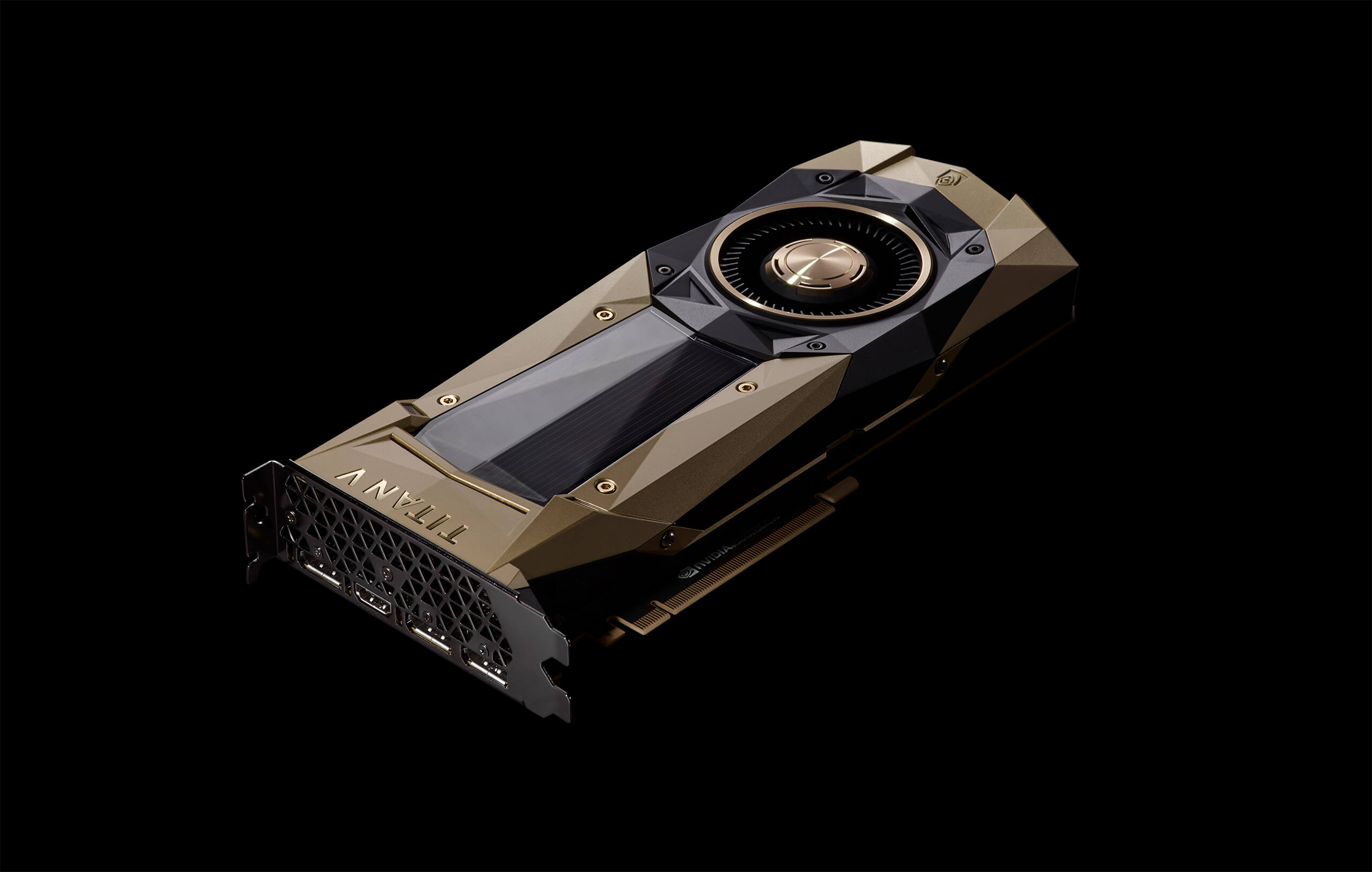
With zero imagination behind the naming, Nvidia'southward tensor cores were designed to carry 64 GEMMs per clock cycle on four x iv matrices, containing FP16 values (floating betoken numbers 16 bits in size) or FP16 multiplication with FP32 improver. Such tensors are very small in size, and then when treatment actual data sets, the cores would crunch through fiddling blocks of larger matrices, building up the last answer.
Less than a year subsequently, Nvidia launched the Turing architecture. This fourth dimension the consumer-form GeForce models sported tensor cores, likewise. The system had been updated to support other data formats, such as INT8 (8-bit integer values), but other than that, they still worked but as they did in Volta.
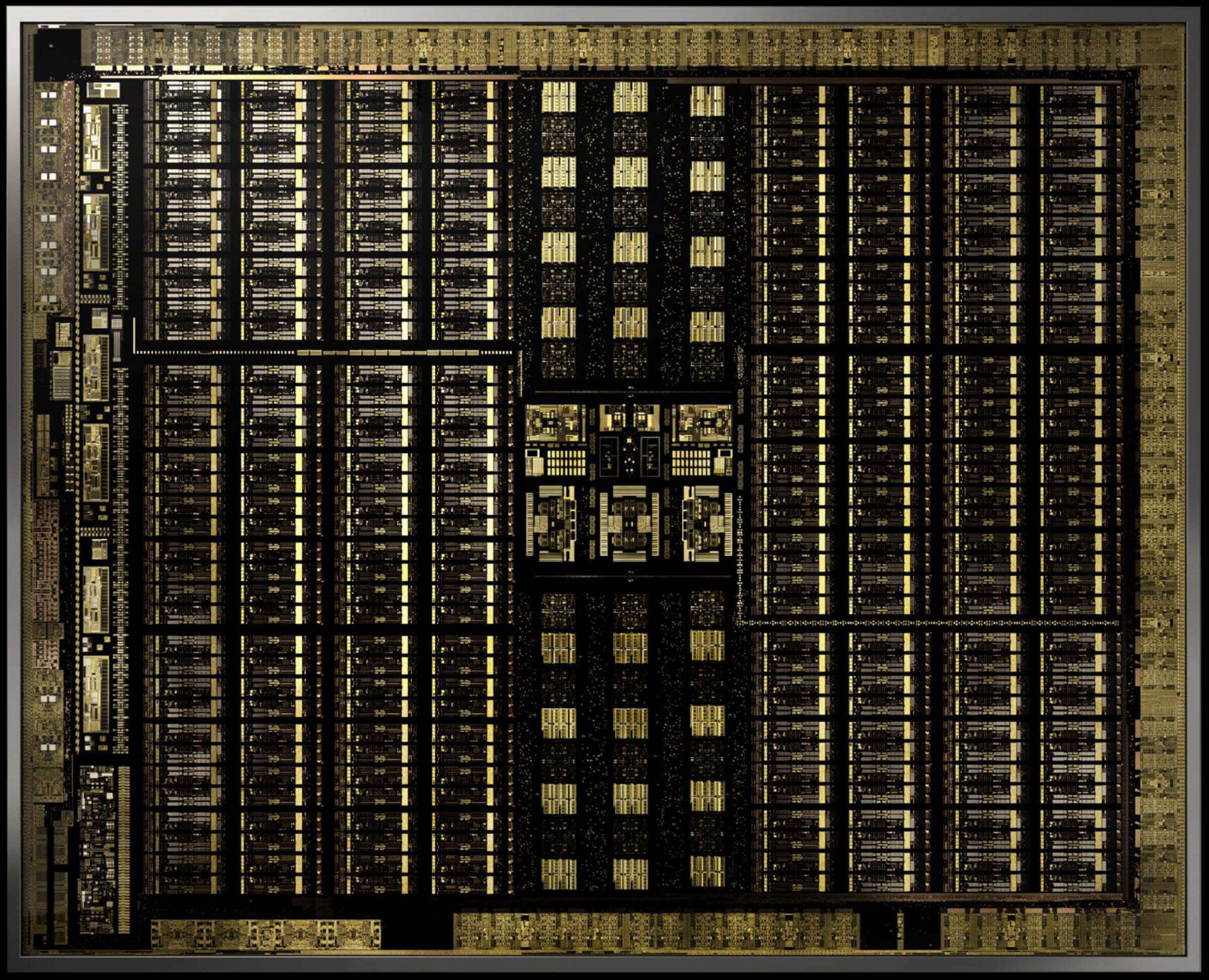
Before this year, the Ampere compages fabricated its debut in the A100 information centre graphics processor, and this time Nvidia improved the operation (256 GEMMs per bike, upwards from 64), added further data formats, and the ability to handle sparse tensors (matrices with lots of zeros in them) very quickly.
For programmers, accessing tensor cores in any of the Volta, Turing, or Ampere chips is easy: the code just needs to use a flag to tell the API and drivers that y'all want to use tensor cores, the data type needs to be ane supported by the cores, and the dimensions of the matrices demand to exist a multiple of 8. Subsequently that, that hardware will handle everything else.
This is all nice, only just how much better are tensor cores at treatment GEMMs than the normal cores in a GPU?
When Volta showtime appeared, Anandtech carried some math tests using three Nvidia cards: the new Volta, a pinnacle-cease Pascal-based one, and an older Maxwell card.

The term precision refers to the number of $.25 used for the floating points numbers in the matrices, with double being 64, unmarried is 32, then on. The horizontal axis refers to the elevation number of FP operations carried out per second or FLOPs for short (call back that 1 GEMM is 3 FLOP).
Merely look what the issue was when the tensor cores were used, instead of the standard so-called CUDA cores! They're clearly fantastic at doing this kind of piece of work, and so simply what can you do with tensor cores?
Math to Brand Everything Meliorate
Tensor math is extremely useful in physics and engineering, and is used to solve all kinds of complex issues in fluid mechanics, electromagnetism, and astrophysics, only the computers used to crunch these numbers tend to practise the matrix operations on large clusters of CPUs.
Another field that loves using tensors is machine learning, especially the subset deep learning. This is all near handling huge collections of data, in enormous arrays called neural networks. The connections between the various information values are given a specific weight -- a number that expresses how important that connection is.
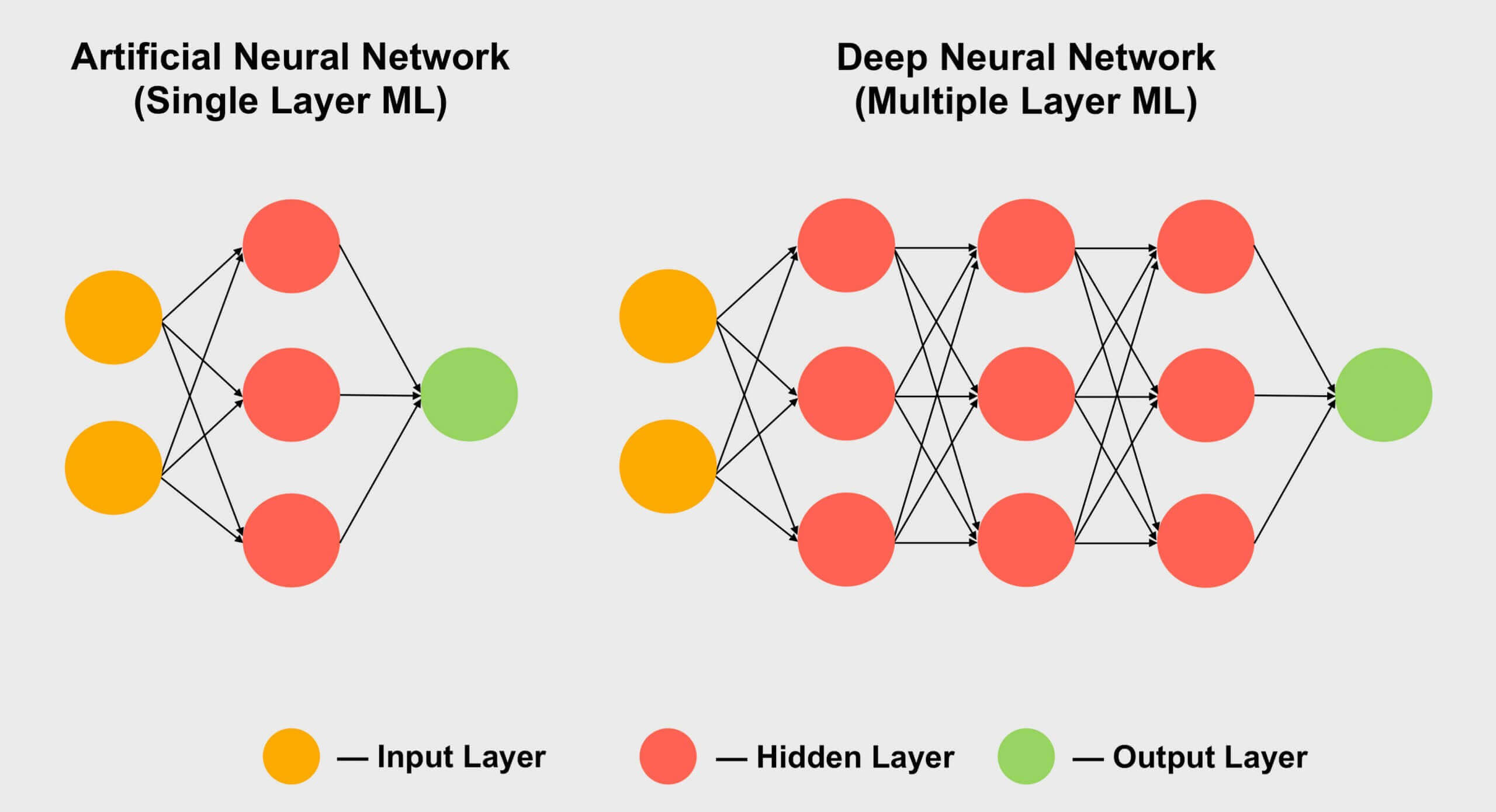
So when you need to work out how all of the hundreds, if not thousands, of connections interact, yous need to multiply each slice of data in the network by all the unlike connectedness weights. In other words, multiply ii matrices together: classic tensor math!
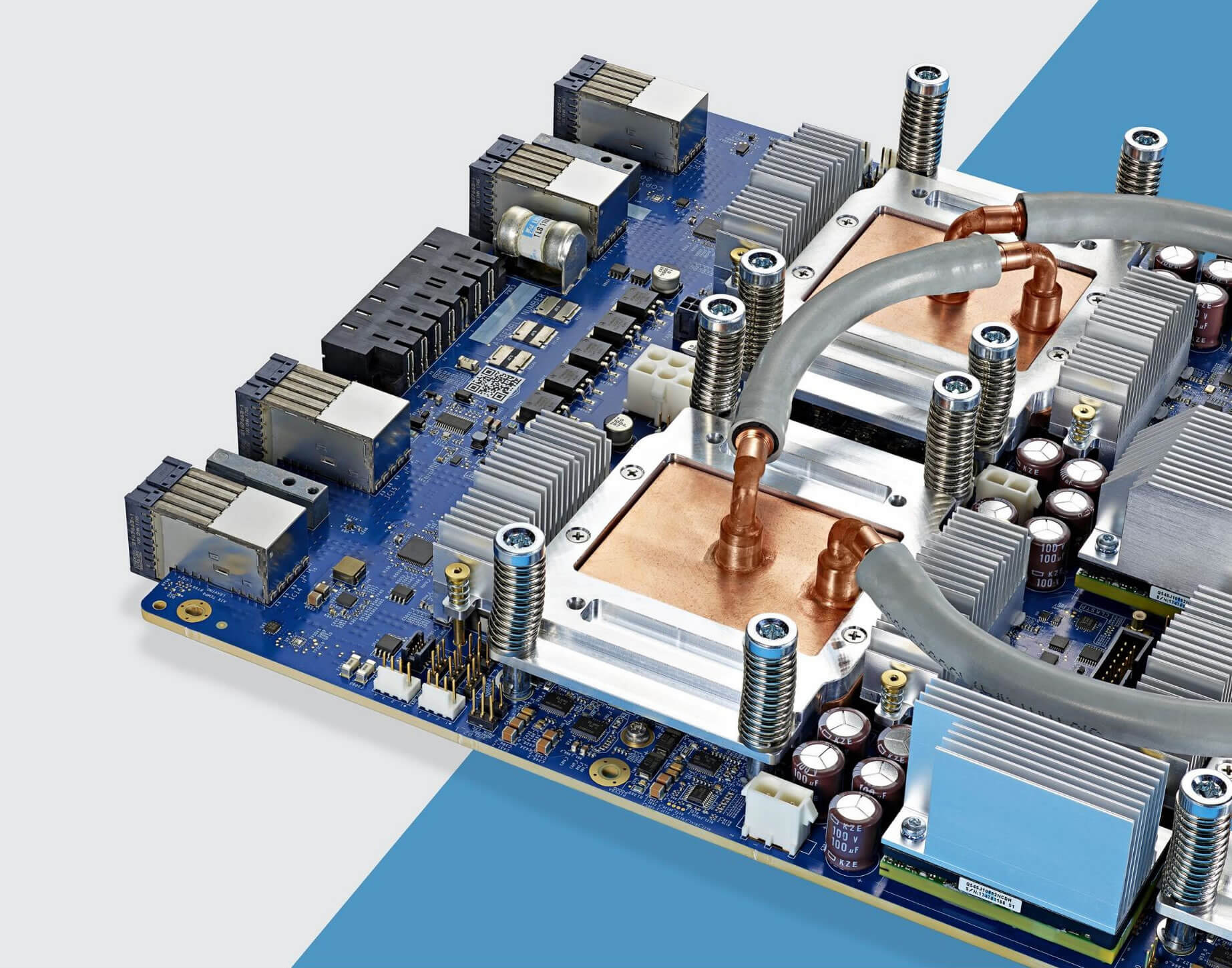
This is why all the big deep learning supercomputers are packed with GPUs and nearly always Nvidia's. All the same, some companies have gone as far as making their own tensor core processors. Google, for case, announced their outset TPU (tensor processing unit) in 2022 just these chips are and then specialized, they tin't do annihilation other than matrix operations.
Tensor Cores in Consumer GPUs (GeForce RTX)
Simply what if you lot've got an Nvidia GeForce RTX graphics menu and y'all're not an astrophysicist solving bug with Riemannian manifolds, or experimenting with the depths of convolutional neural networks...? What use are tensor cores for you?
For the most office, they're not used for normal rendering, encoding or decoding videos, which might seem like you lot've wasted your money on a useless feature. Still, Nvidia put tensor cores into their consumer products in 2022 (Turing GeForce RTX) while introducing DLSS -- Deep Learning Super Sampling.

The basic premise is unproblematic: render a frame at low-ish resolution and when finished, increase the resolution of the end result so that it matches the native screen dimensions of the monitor (e.g. render at 1080p, then resize it to 1400p). That style you get the performance do good of processing fewer pixels, but still get a nice looking image on the screen.
Consoles have been doing something similar this for years, and enough of today's PC games offer the ability, too. In Ubisoft's Assassin's Creed: Odyssey, you tin can alter the rendering resolution right down to just 50% of the monitor's. Unfortunately, the consequence doesn't wait so hot. This is what the game looks like a 4K, with maximum graphics settings applied (click to see the full resolution version):

Running at loftier resolutions ways textures expect a lot better, as they retain fine particular. Unfortunately, all those pixels have a lot of processing to churn them out. Now wait what happens when the game is set to return at 1080p (25% the amount of pixels than before), but and then use shaders at the end to expand it dorsum out to 4K.

The difference might not be immediately obvious, thanks to jpeg compression and the rescaling of the images on our website, but the character'due south armor and the altitude rock formation are somewhat blurred. Let's zoom into a department for a closer inspection:

The left section has been rendered natively at 4K; on the correct, it's 1080p upscaled to 4K. The difference is far more pronounced once motility is involved, as the softening of all the details quickly becomes a blurry mush. Some of this could be clawed back past using a sharpening effect in the graphics carte'southward drivers, but it would be better to not have to do this at all.
This is where DLSS plays its hand -- in Nvidia's get-go iteration of the technology, selected games were analyzed, running them at depression resolutions, high resolutions, with and without anti-aliasing. All of these modes generated a wealth of images that were fed into their own supercomputers, which used a neural network to determine how all-time to turn a 1080p image into a perfect higher resolution one.

It has to exist said that DLSS 1.0 wasn't bang-up, with item often lost or weird shimmering in some places. Nor did information technology actually use the tensor cores on your graphics carte (that was washed on Nvidia'south network) and every game supporting DLSS required its own exam past Nvidia to generate the upscaling algorithm.
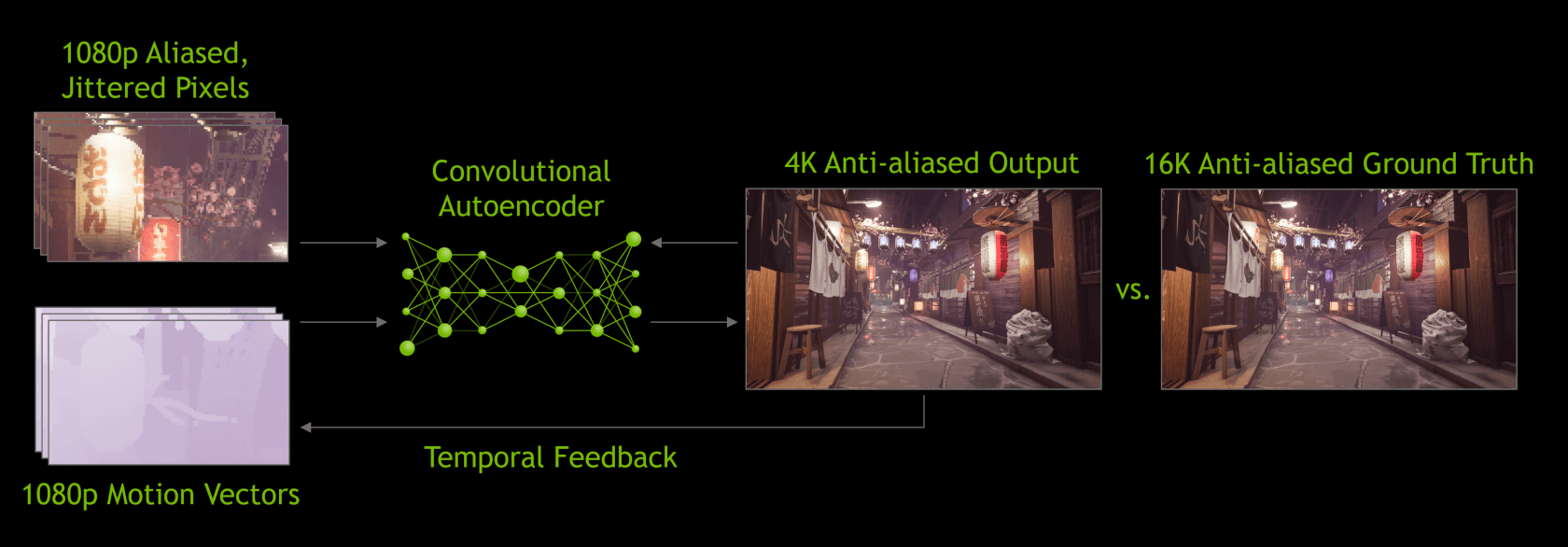
When version 2.0 came out in early on 2022, some big improvements had been made. The most notable of which was that Nvidia's supercomputers were only used to create a general upscaling algorithm -- in the new iteration of DLSS, data from the rendered frame would exist used to process the pixels (via your GPU's tensor cores) using the neural model.

We remain impressed by what DLSS two.0 can achieve, but for now very few games support information technology -- merely 12 in full, at the time of writing. More developers are looking to implement it in their future releases, though, and for skilful reasons.
There are large performance gains to exist found, doing whatsoever kind of upscaling, so you can bet your final dollar that DLSS will keep to evolve.

Although the visual output of DLSS isn't e'er perfect, by freeing upward rendering performance, developers have the scope to include more visual furnishings or offer the same graphics across a wider range of platforms.
Instance in bespeak, DLSS is oft seen promoted alongside ray tracing in "RTX enabled" games. GeForce RTX GPUs pack additional compute units called RT cores: dedicated logic units for accelerating ray-triangle intersection and bounding volume hierarchy (BVH) traversal calculations. These two processes are time consuming routines for working out where a calorie-free interacts with the residuum of objects inside a scene.
As we've found out, ray tracing is super intensive, so in order to deliver playable performance game developers must limit the number of rays and bounces performed in a scene. This procedure can result in grainy images, as well, and then a denoising algorithm has to be practical, adding to the processing complexity. Tensor cores are expected to assistance performance here using AI-based denoising, although that has however to materialize with most electric current applications nonetheless using CUDA cores for the task. On the upside, with DLSS 2.0 becoming a viable upscaling technique, tensor cores tin effectively be used to boost frame rates after ray tracing has been practical to a scene.
There are other plans for the tensor cores in GeForce RTX cards, likewise, such as better character animation or material simulation. But like DLSS one.0 before them, it will exist a while before hundreds of games are routinely using the specialized matrix calculators in GPUs.
Early Days Just the Promise Is There
Then there we become -- tensor cores, nifty trivial $.25 of hardware, only only found in a small-scale number of consumer-level graphics cards. Will this change in the hereafter? Since Nvidia has already substantially improved the performance of a single tensor core in their latest Ampere architecture, there's skillful a chance that nosotros'll run across more mid-range and upkeep models sporting them, too.
While AMD and Intel don't have them in their GPUs, we may run across something like existence implemented by them in the hereafter. AMD does offer a system to sharpen or enhance the detail in completed frames, for a tiny performance toll, and so they may well just stick to that -- specially since it doesn't need to be integrated by developers; it'due south just a toggle in the drivers.
There's also the argument that die infinite in graphics chips could be better spent on just calculation more than shader cores, something Nvidia did when they built the upkeep versions of their Turing fries. The likes of the GeForce GTX 1650 dropped the tensor cores altogether, and replaced them with actress FP16 shaders.
Merely for at present, if yous desire to experience super fast GEMM throughput and all the benefits this can bring, y'all've got two choices: go yourself a bunch of huge multicore CPUs or just one GPU with tensor cores.
Shopping Shortcuts:
- GeForce GTX 1660 Super on Amazon
- GeForce RTX 2060 on Amazon
- GeForce RTX 2070 Super on Amazon
- GeForce RTX 2080 Super on Amazon
- GeForce RTX 2080 Ti on Amazon
- Radeon RX 5600 XT on Amazon
- Radeon RX 5700 XT on Amazon
More than Technical Reads
- Navi vs. Turing: An Architecture Comparing
- Explainer: What Is Chip Binning?
- How 3D Game Rendering Works: Lighting and Shadows
- Beefcake of a Graphics Card
Source: https://www.techspot.com/article/2049-what-are-tensor-cores/
Posted by: harklessdampt1969.blogspot.com


0 Response to "Explainer: What Are Tensor Cores?"
Post a Comment